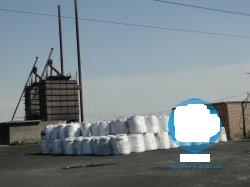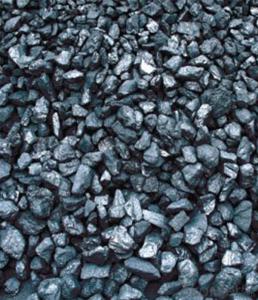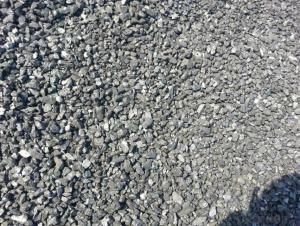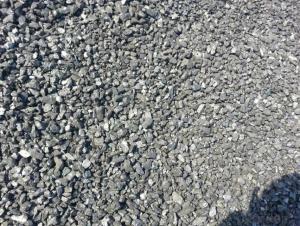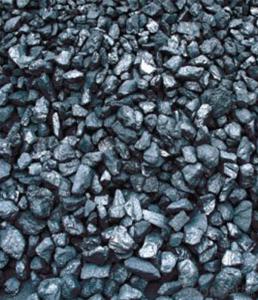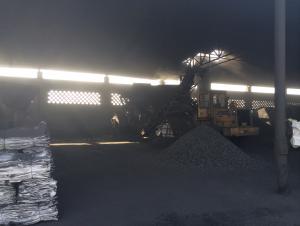Carbon Aditive F.C. 92%min
- Loading Port:
- China Main Port
- Payment Terms:
- TT OR LC
- Min Order Qty:
- -
- Supply Capability:
- -
OKorder Service Pledge
OKorder Financial Service
You Might Also Like
1.Features:
Carbon Additive also called Calcined anthracite Coal, Gas Calcined Anthracite Coal, Carbon Raiser.
The main raw material is Ningxia unique high quality anthracite, with characteristic of low ash and low sulfur. Carbon additive has two main uses, namely as the fuel and additive. When being used as the carbon additive of steel-smelting, and casting, the fixed carbon may achieve above 95%.
2.Application:
It may substitute massively refinery coke or the stone grinds. Meanwhile its cost is much less than the refinery coke and the stone grinds. Carbon Additive may also use as the fuel, for its calorific value may achieve above 9386K/KG. It may substitute burnt carbon massively. The burnt carbon exportation needs the quota; therefore the carburizing agent price superiority is similarly obvious.
3.Specifications:Chemical Composition(%) | ||||
F.C. | Ash | V.M. | S | Moisture |
%(min) | %(max) | |||
92 | 7.0 | 1.2 | 0.30 | 1.0 |
0.5-3mm, 1-4mm,0.5-4mm,1-3mm, 90%min,or at customer’s option; | ||||
In 1000kgs big bag; or 1200kgs big bag; or 25kgs small bag, then into 1000kgs big bag; or 25kgs or 50kgs small bag, then put into containers directly;or at customer’s option; | ||||
- Q: What is the density of carbon steel and alloy steel?
- Manganese steel 7.8115CrA 7.74 steel20Cr, 30Cr, 40Cr steel, 7.8238CrA 7.80 steelChromium vanadium, chromium nickel, chromium nickel molybdenum, chromium, manganese, silicon, manganese, nickel chromium manganese silicon silicon steel 7.85Chromium nickel tungsten steel 7.80
- Q: What is carbon sequestration and how does it work?
- The process of carbon sequestration involves the capture and storage of carbon dioxide (CO2), preventing its release into the atmosphere and its contribution to climate change. In the fight against global warming, this process is of utmost importance because CO2, as a greenhouse gas, traps heat and leads to an increase in the Earth's temperature. There are various techniques for carbon sequestration, with terrestrial, oceanic, and geological methods being the most commonly used. Terrestrial sequestration entails the capture of CO2 from the atmosphere and its storage in plants, trees, and soil. This can be achieved through afforestation, reforestation, and adopting sustainable agricultural practices that boost soil carbon storage. On the other hand, oceanic sequestration involves the storage of CO2 in the oceans, taking advantage of their natural ability to absorb and retain large quantities of CO2. By enhancing the ocean's capacity to capture CO2, for example through the use of algae or other marine plants, we can effectively decrease the concentration of CO2 in the atmosphere. Geological sequestration, meanwhile, revolves around capturing CO2 from industrial sources like power plants or factories and injecting it deep underground into geological formations. These formations, such as depleted oil and gas reservoirs or saline aquifers, serve as natural storage sites for the captured CO2. Over time, the injected CO2 becomes trapped and mineralizes, permanently storing it away from the atmosphere. Moreover, technological advancements have made it possible for carbon sequestration to occur through methods like direct air capture (DAC) and carbon capture and storage (CCS). DAC involves the use of machines or devices to directly capture CO2 from the air, while CCS focuses on capturing CO2 emissions from industrial processes before they are released into the atmosphere. Once captured, the CO2 can be transported and stored underground, either in geological formations or in depleted oil and gas reservoirs. In summary, carbon sequestration plays a vital role in mitigating climate change. By capturing and storing CO2, we can reduce the concentration of greenhouse gases in the atmosphere and help stabilize the Earth's climate. However, it is important to note that while carbon sequestration is an important solution, it should not be viewed as the sole solution. Combining carbon sequestration with other strategies for mitigating climate change, such as reducing emissions and transitioning to renewable energy sources, is crucial for effectively combating this global challenge.
- Q: What's a carbon cloth to do as a fish pole?
- This is difficult, usually with a lathe like tool, by heating in the brush, layer by layer roll up, and finally cut off paint, baking
- Q: How does carbon affect the formation of smog?
- Carbon plays a significant role in the formation of smog through the process of photochemical reactions. When carbon-based pollutants, such as automobile exhaust and industrial emissions, are released into the atmosphere, they can undergo reactions with other pollutants and sunlight. This leads to the production of ground-level ozone, a key component of smog. Additionally, carbon-containing compounds can contribute to the formation of particulate matter, which further exacerbates smog formation.
- Q: How does carbon impact the pH balance of oceans?
- Ocean acidification is caused by the absorption of carbon dioxide (CO2) released into the atmosphere by the oceans. This absorption leads to an increase in the acidity of the water, as the CO2 reacts with seawater to form carbonic acid. The carbonic acid then releases hydrogen ions, which further contribute to the acidity of the water. The increased acidity of the oceans has harmful consequences for marine life and ecosystems. Many marine organisms, including coral reefs, shellfish, and phytoplankton, rely on calcium carbonate to create their shells and skeletons. However, in more acidic waters, the availability of calcium carbonate decreases, making it difficult for these organisms to maintain their structures. This can result in weakened shells, stunted growth, and even death. Ocean acidification also affects the reproductive and physiological processes of marine organisms. For instance, it can interfere with the development of fish larvae and disrupt the ability of certain species to detect predators or locate food. Moreover, the increased acidity can harm the organisms that rely on these species for sustenance, thus causing a ripple effect throughout the food chain. Additionally, ocean acidification can have a profound impact on the overall health and functioning of marine ecosystems. Coral reefs, often referred to as the "rainforests of the sea," serve as habitats for a wide range of marine species. However, as the acidity of the oceans rises, coral reefs become more susceptible to bleaching and ultimately dying off. This loss of coral reefs would result in catastrophic consequences for the biodiversity and productivity of marine ecosystems. To summarize, the rise in atmospheric carbon dioxide levels leads to the absorption of CO2 by the oceans, resulting in ocean acidification. This process disturbs the pH balance of the oceans, making them more acidic. The increased acidity has detrimental effects on marine life, including the ability of organisms to build their structures, reproduce, and function within their ecosystems. It is imperative to address the issue of carbon emissions in order to mitigate the negative impacts of carbon on the pH balance of oceans and safeguard the health and integrity of marine ecosystems.
- Q: What are the different types of carbon-based pigments?
- There are several different types of carbon-based pigments that are widely used in various industries. Some of the most common types include carbon black, graphite, charcoal, and lampblack. Carbon black is a highly pure form of carbon that is produced by the incomplete combustion of hydrocarbon fuels. It is the most widely used carbon-based pigment and is known for its intense black color. Carbon black is used in a wide range of applications, including inks, paints, plastics, and rubber products. Graphite is another important carbon-based pigment that is known for its dark gray to black color. It is a soft and brittle material that can be easily crushed into a fine powder. Graphite is used primarily in pencils, as it leaves a smooth and consistent mark on paper. It is also used in other applications such as lubricants, batteries, and electrical conductors. Charcoal is a carbon-based pigment that is produced by burning wood or other organic materials in the absence of oxygen. It is known for its deep black color and is commonly used in art as a drawing medium. Charcoal can be easily manipulated and smudged on paper, allowing artists to create a wide range of tones and textures. Lampblack, also known as carbon black or soot, is a pigment that is produced by burning organic materials such as oil or wood. It has a deep black color and is often used in printing inks, coatings, and dyes. Lampblack is also used in various industrial applications, including as a coloring agent in plastics and rubber products. These are just a few examples of the different types of carbon-based pigments that are commonly used. Each type has its own unique properties and applications, making them versatile and essential in various industries.
- Q: How does carbon dioxide affect textile production?
- Textile production can be significantly impacted by carbon dioxide in various ways. Firstly, the manufacturing process of textiles generates carbon dioxide, which contributes to overall greenhouse gas emissions and worsens climate change. This, in turn, can result in long-term consequences like extreme weather events, rising temperatures, and sea-level rise. These outcomes can disrupt the supply chain and production of textiles. Furthermore, carbon dioxide emissions from textile production contribute to air pollution, which can adversely affect human health. Workers exposed to high levels of carbon dioxide may experience respiratory problems and other respiratory diseases as a result of the release of this greenhouse gas. Moreover, carbon dioxide is commonly used in the dyeing and finishing process of textile production. However, this practice can have detrimental effects on the environment. When carbon dioxide is released into water bodies during the dyeing process, it can contribute to water pollution, contaminating water sources and harming aquatic life. Additionally, excessive use of carbon dioxide in textile production can have economic implications. Since carbon dioxide is a byproduct of burning fossil fuels, its production is inherently tied to the consumption of non-renewable resources. The reliance on fossil fuels makes textile production vulnerable to price fluctuations, as the cost of carbon dioxide emissions and energy production can vary significantly. To mitigate the negative impacts of carbon dioxide on textile production, several measures can be implemented. These include adopting cleaner production techniques and technologies that reduce carbon dioxide emissions, such as utilizing renewable energy sources or implementing carbon capture and storage systems. Furthermore, investing in sustainable and environmentally-friendly materials, like organic cotton or recycled fibers, can help reduce the carbon footprint of textile production. Overall, reducing carbon dioxide emissions in textile production is crucial for the industry to become more sustainable and mitigate its environmental and health impacts.
- Q: What are the impacts of carbon emissions on the stability of permafrost?
- Carbon emissions have a significant impact on the stability of permafrost. Permafrost refers to the layer of soil, sediment, and rock that remains frozen for at least two consecutive years. It covers vast areas in the Arctic, subarctic regions, and high-altitude mountain ranges. One of the main impacts of carbon emissions on permafrost stability is the acceleration of climate change. Carbon dioxide (CO2) and other greenhouse gases trap heat in the atmosphere, leading to global warming. As temperatures rise, permafrost starts to thaw, causing a range of negative consequences. Thawing permafrost releases large amounts of stored carbon into the atmosphere. This carbon was previously locked in the frozen organic matter, such as dead plants and animals, which accumulated over thousands of years. As permafrost thaws, microbes decompose this organic matter and release greenhouse gases like carbon dioxide and methane. These emissions create a positive feedback loop, further exacerbating climate change and leading to more permafrost thawing. The release of carbon from thawing permafrost contributes to the overall increase in atmospheric greenhouse gas concentrations. This, in turn, amplifies global warming and global climate change. The impacts are not limited to the Arctic; they affect the entire planet. Rising temperatures, sea-level rise, extreme weather events, and disruptions to ecosystems are some of the consequences of global climate change. Permafrost thaw also affects infrastructure and human settlements in the Arctic and subarctic regions. Buildings, roads, pipelines, and other infrastructure built on permafrost can be destabilized as the ground beneath them softens. This can lead to structural damage and economic losses. Additionally, communities that rely on permafrost for traditional activities such as hunting, fishing, and transportation face challenges as the landscape changes. The impacts of carbon emissions on permafrost stability are not only local but also global. The release of stored carbon from permafrost contributes to climate change, which has far-reaching consequences for ecosystems, economies, and societies worldwide. It is crucial to reduce carbon emissions and mitigate climate change to preserve permafrost and its vital role in the Earth's climate system.
- Q: Whether the CO2 content in the boiler smoke can not be measured, the measurement of carbon content of fly ash ah? @ @ Thank you very much!!!
- No The amount of unburned carbon in the fly ash is not carbon dioxide.CO2 measurements are simple.
- Q: How is carbon used in the production of cosmetics?
- Carbon is used in the production of cosmetics in various forms. It can be found in activated charcoal, which is used for its ability to absorb impurities and toxins from the skin. Carbon black, a pigment made from carbon, is used to provide color in cosmetics such as eyeliner, mascara, and lipstick. Additionally, carbon-based compounds like carbonates and carbomers are used as stabilizers and thickeners in cosmetic formulations.
Send your message to us
Carbon Aditive F.C. 92%min
- Loading Port:
- China Main Port
- Payment Terms:
- TT OR LC
- Min Order Qty:
- -
- Supply Capability:
- -
OKorder Service Pledge
OKorder Financial Service
Similar products
Hot products
Hot Searches

